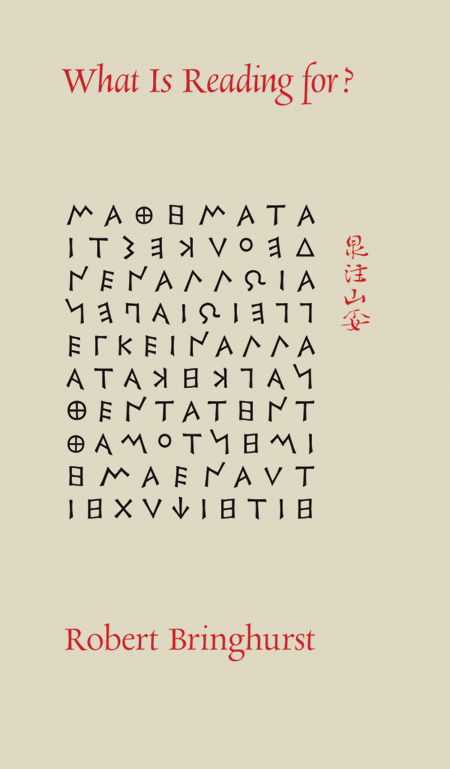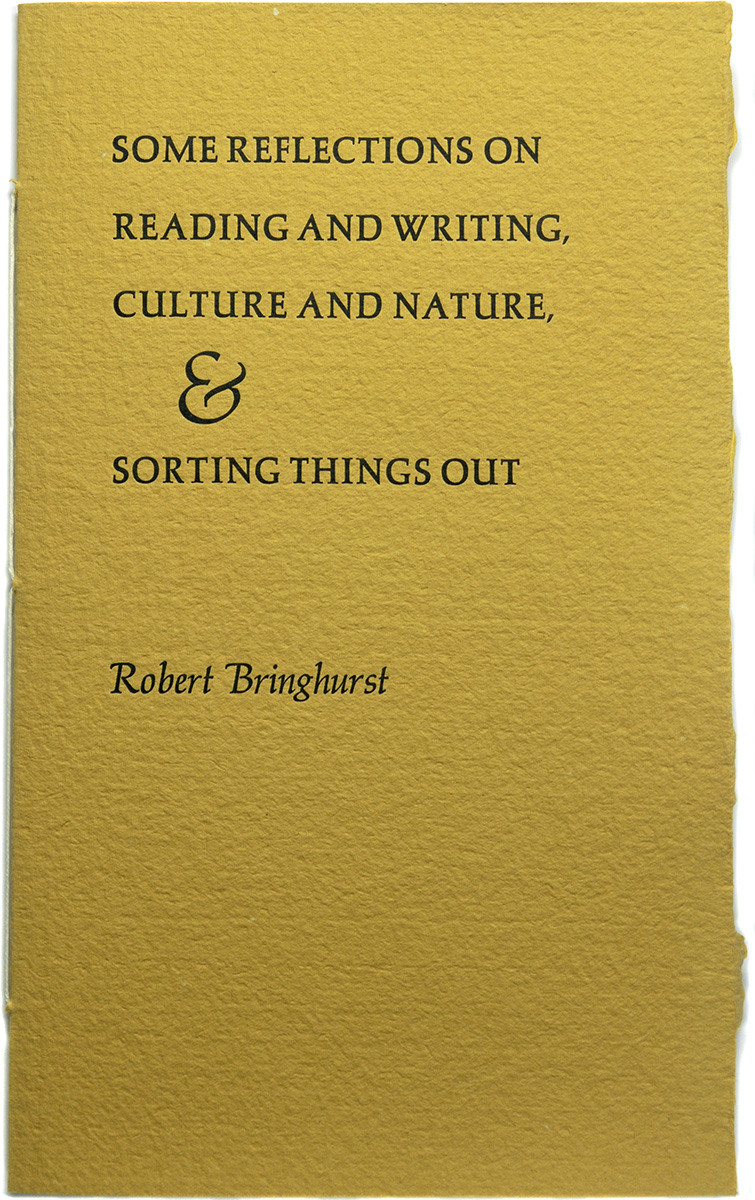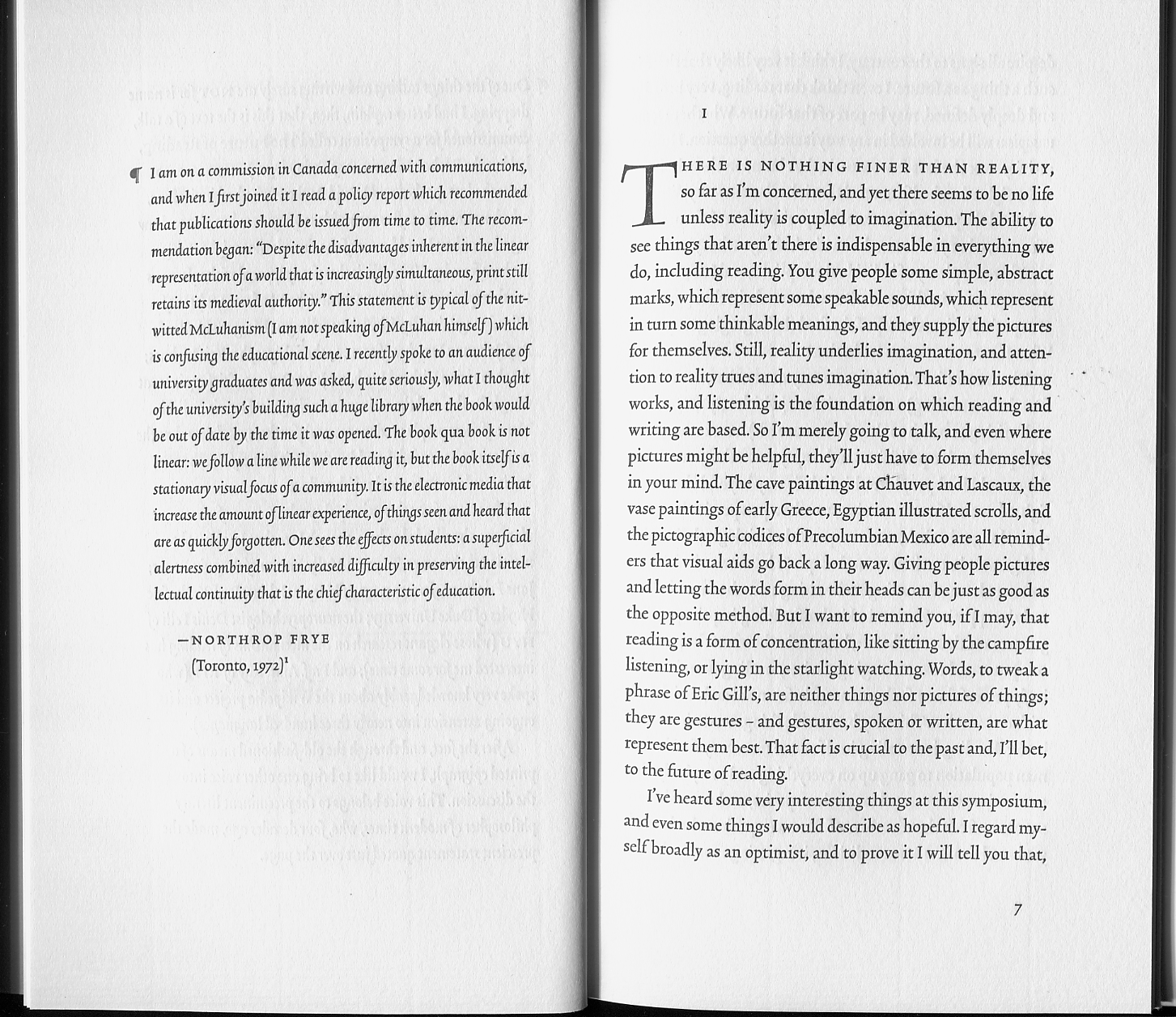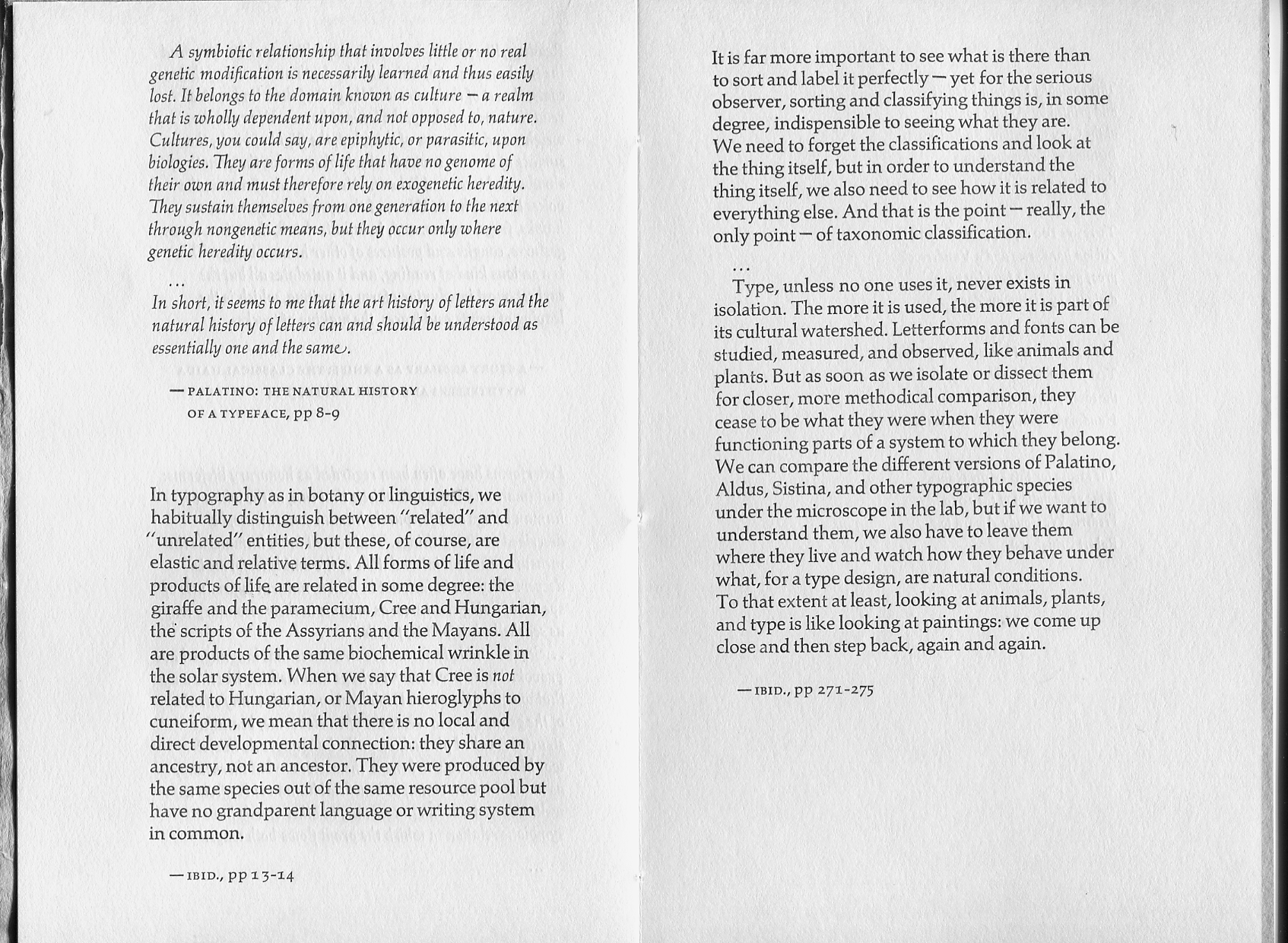

Robert Bringhurst, What Is Reading For? RIT Cary
Graphic Arts Press; Rochester, 2011, Softcover, 40pp.
US$29.95. ISBN 978-1-933360-53-9.
Robert Bringhurst, Some Reflections on Reading and
Writing, Culture and Nature, & Sorting Things Out. RIT
Cary Graphic Arts Press; Rochester, 2016, Hand sewn
softcover, 12pp. US$20.00.
Typography is an unusual art. While, like other arts, it appeals to our senses and emotions, it is also intimately related to our reason and thoughts, since typography is intended to be a medium for the latter. Thus it is not coincidental that Robert Bringhurst is not just a master typographer, but also a poet and a deep thinker. His essays are always worth careful study. This review is about two books by this author.
The book What is Reading For? is based on the talk Bringhurst gave in 2010 at the symposium The Future of Reading at the Rochester Institute of Technology. It is a small brochure densely packed with thoughts, ideas and observations. I have re-read it several times, and every time found something new and important to ponder.
This is not just a book about books. Rather, Robert Bringhurst took the occasion to talk about reading in the wide context of human history. I cannot help but quote one of the first paragraphs, rather controversial (or should we say, prescient?):
I’ve heard some very interesting things at this symposium, and even some things I would describe as hopeful. I regard myself broadly as an optimist, and to prove it I will tell you that, despite all signs to the contrary, it is very likely that there is such a thing as a future. I even think that reading, very broadly and deeply defined, may be part of that future. Whether Homo unsapiens will be involved in any way is another question. Human activity over the last few centuries has been, on the whole, so short-sighted and self-centered that it has become very difficult to defend the proposition that our species deserves a future. But of course, what you do not deserve isn’t always what you do not get. There are plenty of individual exceptions, and I don’t doubt there are many in this room. But what we do in the aggregate, as a species, is sit at the top of the food chain, gorging ourselves. What future can anyone see in that?
I need to stop here, suppressing the urge to quote the whole book from the beginning to end.
Bringhurst talks about the past of the book the reading, and then goes on to the future and digital books. He compares Western and Eastern writing systems and the deep influence they had on the traditions of reading, typography and calligraphy. He talks about oral cultures and how careful listening is a form of reading.
For me of special interest were his thoughts about the double role of the book—as a piece of art and as an embodiment of the author’s thoughts that are by themselves more important than the book itself:
The physical book, as Richard Lanham said the other day, can have a talismanic value, and that’s important. But whenever you deal with talismans, you have to keep track of the difference between the talisman and the spirit it represents. Moby Dick is a book, and some of us love it so much that we want to honor it by setting it in magnificent type and printing it really well, on really good paper, perhaps with a few magnificent wood engravings of ships, harpoons, and whales for graphic relief, and then sewing and casing it really well, and displaying it like an icon. That’s fine thing to do. But if the costume gets too grand, it may defeat its purpose. Books, whether written or oral, are and have to be utilitarian objects. They have to be used, like shoes and socks. That is to say, you have to read them—and to make them worthwhile, you have to read them yourself. Machines can’t do it for you, and no one else can do it for you. Someone else could certainly read it aloud while you listen, but you still have to read it too, using your ears instead of your eyes.
Bringhurst continues the comparison between books and utilitarian objects by quoting a poem by Pablo Neruda about a pair of knit socks made for him by a loving and loved woman. The poet resists the temptation to put the socks “in a gilded cage”. He pays the tribute to the socks by treating them as socks:
I stuck out my feet
and put them on:
the lovely
socks
and then my shoes.
What Is Reading For? has many astute observations, such as a note about the celebration of immaturity in the scribal culture in European monasteries: I immediately recalled the halls of certain high-tech companies in the modern US. Bringhurst easily travels between poetry, music and art (a very interesting section compares a 17th century painting by Gerard ter Borch to a 19th century painting by Jean-Baptiste Corot). It is a pleasure to read.
The book is also a pleasure to hold, confirming Bringhurst’s thought that it is a fine thing to honor the book by “setting it in magnificent type and printing it really well, on really good paper”. The book is typeset by letterpress with beautiful fonts: Trinité for text, Rialto for titling, New Hellenic for Greek and Parmenides for archaic Greek type, and Kaiti, Mincho and Kazuraki for Han type.

A second book I’d like to mention here is Some Reflections on Reading and Writing, Culture and Nature, & Sorting Things Out, a small pamphlet of Bringhurst’s quotations, handset and printed by Amelia Fontanel for the occasion of Bringhurst being presented with the 2016 Frederic W. Goudy Award. The book may be especially significant for the TeX community because it is set in Hermann Zapf’s fonts. There are just 100 copies of this book (mine is No. 73), so if you want it for your collection, you should hurry. Below is a spread:

These books are a great tribute to the master of typography, poet and thinker Robert Bringhurst.